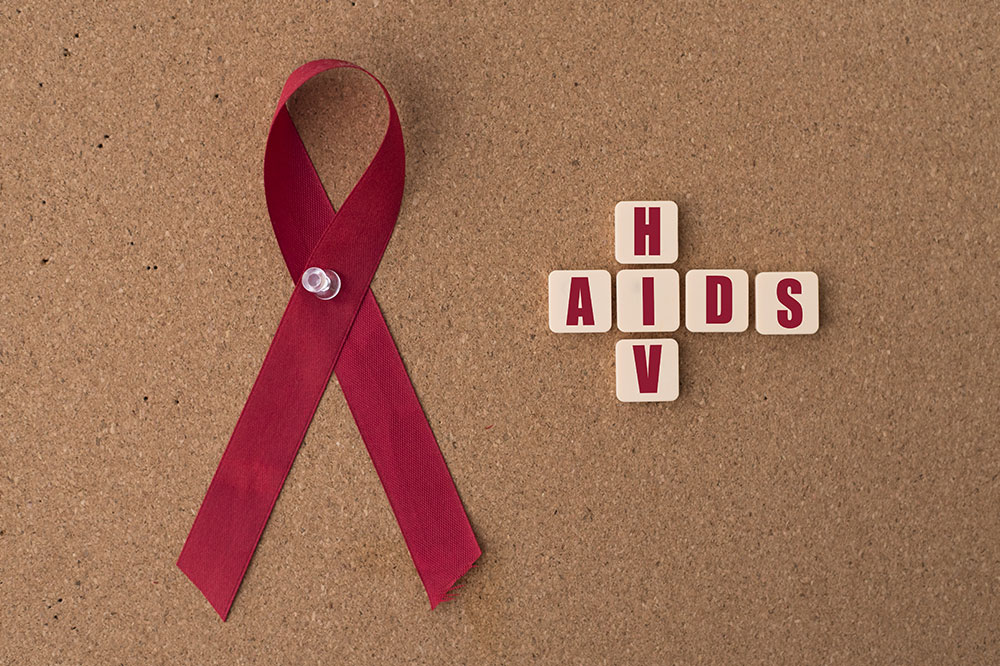
HIV and AIDS – Symptoms, causes, and management
Acquired immunodeficiency syndrome, or AIDS, is a chronic and potentially fatal disease. This virus attacks the immune system and renders one’s body incapable of fighting infections and illnesses. Generally, HIV AIDS is considered a sexually transmitted disease. However, using non-sterilized needles, contact with infected blood, and illegal pharmaceutical users can also lead to this disease. The virus that causes AIDS primarily targets CD4 cells in the immune system, which are crucial for warding off infections.
Symptoms of HIV and AIDS
The symptoms of HIV AIDS depend on the phase of the disease. The condition has four stages, the last leading to AIDS.
Acute HIV
People with HIV may develop a flu-like infection in the first four weeks once the virus invades the body. This primary infection, called Acute HIV, could last for a couple of weeks. Symptoms of Acute HIV are fever, rash, headache, body ache, sore throat, swollen lymph glands around the neck, cough, diarrhea, and night sweats.
These symptoms may be so mild that it is hard to notice them. Nonetheless, the viral load of HIV is high during this time. Therefore, the virus spreads quicker at this time than it does in the next stage.
Chronic HIV
When the infection turns into a latent clinical infection, it still exists in the white blood cells in the body. Most people may not experience symptoms or infections in this stage. This phase of the disease can last for several years when the person is undergoing antiretroviral therapy (ART). After this phase, there is a high possibility of the patient developing a severe disease over time.
Symptomatic HIV infection
Since HIV targets the body’s immune cells, it multiplies quicker during this stage. People in this phase of the disease may experience HIV AIDS symptoms like fatigue, fever, diarrhea, pneumonia, oral yeast infection, swollen lymph nodes, and shingles.
Causes of HIV and AIDS
Since HIV may be found in blood, vaginal fluid, and semen, sexual contact with an infected individual is the main way to spread it. Receiving blood transfusions or organ transplants from an infected donor, sharing needles or other supplies with an infected person, and mother-to-child transmission during pregnancy, childbirth, or breastfeeding are additional common modes of transmission.
However, these modes of transmission are now uncommon in many nations due to improved screening and testing procedures. Having unprotected sex (i.e., not using condoms or other barriers to prevent the exchange of bodily fluids), having multiple sexual partners, having a sexually transmitted infection (STI), and using non-sterile needles are all factors that can increase the risk of HIV transmission.
HIV and AIDS and associated risks
HIV AIDS is a condition that affects people with HIV. It is the most drastic stage of the disease. CD4 is a vital glycoprotein in the body. A healthy person has 500-1,600 CD4 in their body, whereas their CDR count with HIV AIDS will drop to 200 per cubic millimeter. As the immunity system is deteriorating in a person diagnosed with the disease, they will be at risk of developing other conditions such as:
Pneumonia
Tuberculosis
Oral thrush
Cytomegalovirus
Toxoplasmosis
Cryptosporidiosis
Cancer like lymphoma and Kaposi sarcoma
Treatments for HIV and AIDS
Professionals recommend prompt treatment after the diagnosis of HIV AIDS, regardless of the phase the virus is in. While the cure for the condition is yet to be discovered, treatments can help slow down the condition’s progression and weaken the virus.
Antiretroviral therapy (ART) is the primary treatment for HIV AIDS. A combination of regular prescriptions can stop the reproduction of the virus. The prescriptions offer protection against the virus and help the immune system stay strong. Antiretroviral therapy stops HIV from transforming into AIDS and decreases the disease’s risk of spreading.
Once the treatment is in effect, the amount of virus in the body will be undetectable. It means that although the virus does not reflect in tests, the person is still HIV-positive. If the therapy is discontinued, the virus will act up again soon after and destroy the CD4 cells.
People with HIV and AIDS must undergo routine blood tests to check whether the treatments are effective. If the doctor finds that the treatments are not working, they will have to change the course of the treatment. A person can live a long, healthy life with regular treatments and by maintaining a healthy lifestyle and having balanced meals.
One must get oneself tested if one experiences HIV AIDS symptoms. A person should refrain from unprotected intercourse and inform their partners. If the doctor prescribes a treatment, complete the course. Regardless of gender, sexual orientation, or lifestyle, anyone can contract HIV.




